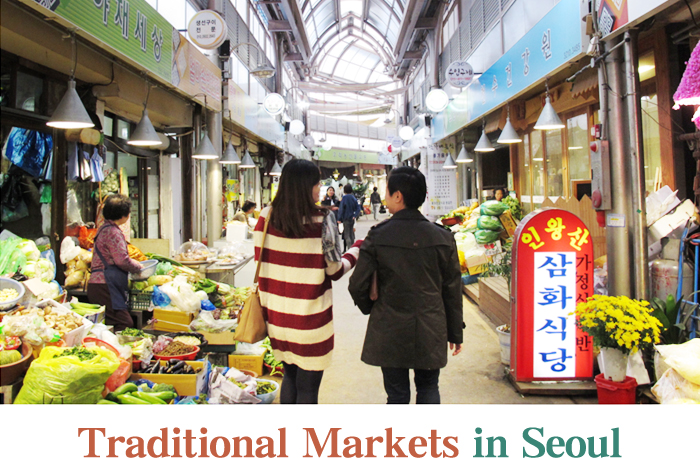
Traditional markets in Korea are hidden treasures, often located in residential neighborhoods, or just around the corner from grand palaces and beautiful historical attractions.
Below are four of Seoul’s foremost markets, which remain largely beneath the tourism radar but are welcoming of all visitors. They range from Tongin’s cozy and Garak’s sprawling markets, to Pungmul’s trove of vintage treasures and fragrant Gyeongdong’s eastern medicinal herbs. Step into Korea’s past, come face-to-face with friendly locals, and shop for unconventional souvenirs to add a unique touch to your trip.

Tongin Market is located in a long, narrow alley just around the corner from Seoul’s
Gyeongbokgung Palace. Situated in a residential district in full view of the mountains, the market dates back to 1941, opening during Japanese colonial rule. In a bid to reinforce the market’s sustainability, the market now offers hands-on experience programs and a unique lunch set to attract and welcome those visiting the neighborhood. The market is comparatively smaller to others in Seoul, making it more accessible, easy to navigate, and ideal for wandering. The market’s vendors are also friendly to both local and foreign visitors.
Tongin’s main attraction is perhaps its fresh and affordable Dosirak (lunch set) café. The lunch program gives visitors the rare opportunity to select and sample fresh Korean banchan (side dishes) from a variety of stalls for affordable prices. Visitors can purchase yepjoen (brass coins) for just 500 won each, and exchange them for fresh banchan from participating stalls in the market. Rice and soup are available at the customer center for 2 yeopjeon each. Vendors at Tongin also sell a variety of fruits, vegetables, household goods and other items. Those with a cast-iron stomach should also try Tongin’s famous fried tteokbokki, which was featured on the hugely popular Running Man show.
Tongin Market
- Address: 10-3, Tongin-dong, Jongno-gu, Seoul
- Getting there: Get off at Gyeongbokgung Station (Seoul Subway Line 3), Exit 2, continue straight for 700 meters (10 min. on foot)
- Hours: Mon-Fri (09:00-18:00), Sat (09:00-13:00), Closed on Sundays and national holidays
- Tel: +82-2-722-0911 (Korean)
- Homepage: http://tonginmarket.co.kr
Recommended restaurants: Dosirak Café
- Location: 2F of Customer Service Center, located in Tongin Market
- Menu: Various kinds of Korean side dishes including Kimchi, gimbap, fish, etc
- Hours: Tues – Sun (11:00-17:00) ※Coins can be purchased before 16:00/ Closed on Mondays and every third Sunday of the month
- Tel: +82-2-722-0936 (Korean)
Originally a market for selling agricultural wares from Gyeonggi-do and Gangwon-do, Gyeongdong has developed into the biggest eastern medicinal herbs market in the country, providing an estimated 70% of the country’s medicinal herbs.
Moments after entering Gyeongdong Market’s seemingly ordinary range of groceries and foodstuffs, the market reveals its roots in traditional herbal medicine, with the scent of fragrant ginseng and medicinal herbs that fill the air. In addition to the ordinary aspects of this traditional market, Gyeongdong also has rows of traditional pharmacies, some even housed in traditional Korean hanok with traditional wooden medicine cabinets.
One of the market’s big draws for visitors is its “Korean Traditional Medicine Experience Hall For Foreigners,” administered by KTO, which also offers in-depth hands-on programs. The experience is offered in English, Chinese and Japanese, and visitors can try making oriental herb soap, incense bags, herbal foot baths, and rice cakes, receive a general checkup and acupuncture from a doctor, all of which is free of charge.
Gyeongdong Market
- Address: Jegi-dong, Dongdaemun-gu, Seoul
- Getting there: Get off at Jegi Station (Seoul Subway Line 1), Exit 2, direct access from subway
- Hours: Oriental Medicine Market Mon-Sat (09:00-19:00), Closed on Sundays and national holidays (several stores are open)/ Traditional Market (04:00-19:00), Closed on major holidays (Seollal & Chuseok)/Korean Traditional Medicine Hall for Foreigners Mon-Fri (Medicine Experience 1:30-17:00, herbal products 10:00-17:00)
- Tel: +82-2-967-8721 (Korean)
- Homepage: http://www.kyungdongmart.com (Korean)
Recommended restaurants: Andongjip
- Location: B1, 1022, Jegi-dong, Dongdaemun-gu, Seoul (B1 of Gyeongdong Market’s new building)
- Menu: Andong kalguksu (5,000 won), lettuce jeon, etc
- Hours: 09:00-20:00 ※Closed on the first and third Sunday of each month
- Tel: +82-2-965-3948 (Korean)
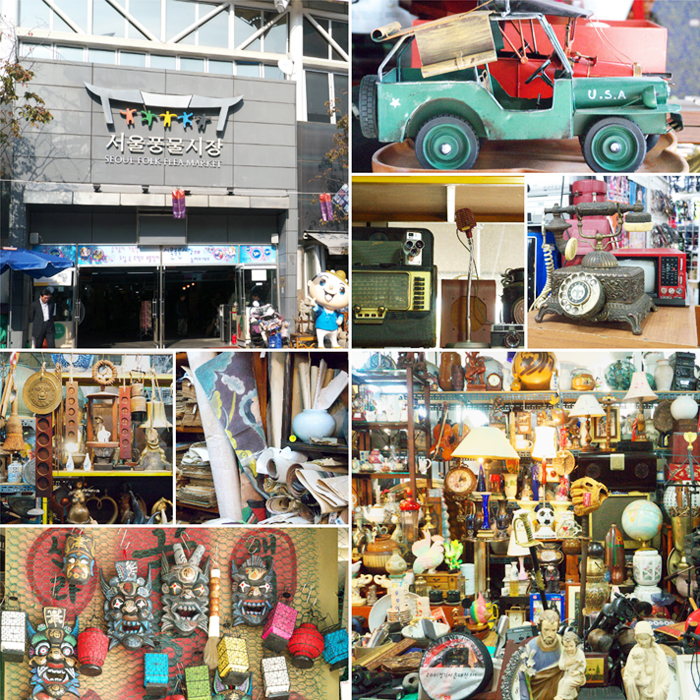
Housed in a two-story building along
Cheonggyecheon Stream, the Seoul Folk Flea Market (also referred to as Seoul Pungmul Market) offers folk souvenirs, regional specialties, clothing, food, and miscellaneous items. The Seoul Folk Flea Market originated from the flea market in the Hwanghak-dong area, where many street shops and vendors gathered around Cheonggyecheon Steam before it was restored and modernized into its current state. The market was relocated to Dongdaemun Stadium while the stream was undergoing restoration, and was moved to Cheonggyecheon in 2008.
There are countless shops selling everything under the sun, from everyday apparel to vintage items. The market is well organized into several sections: food court, sundry goods, clothes, antiques, and regional goods. Here, nothing is considered trash. There’s an endless expanse of both art and antique items: old and new, both recognizable and mysterious. There’s something here for everyone from the serious collector to the casual shopper. The rare and unique knick knacks also make lovely travel gifts, either from visitors to their hosts, or as souvenirs to be given to friends and loved ones upon returning home.
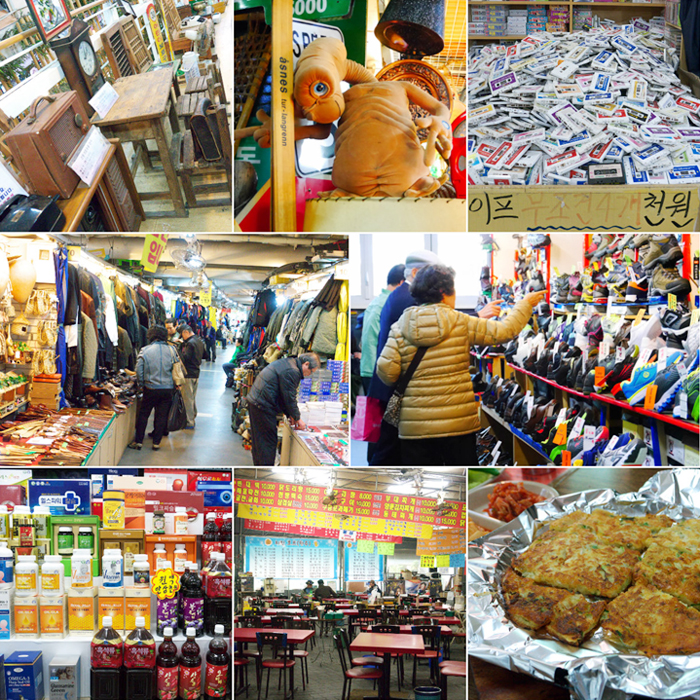
The market also has a food court on both floors. From individual dishes to large dishes for sharing, the menu offers a range of Korean food items to choose from. Diners here include market goers taking a break from shopping and regular customers who come just for the food. Evenings are especially lively and bustling, as more people pour in for the delicious and affordable food and drinks.
In addition to the shopping experience, visitors can also try some free hands-on activities at the market’s Traditional Culture Experience Center. These include making hanji crafts, folk masks, and other traditional items.
Seoul Folk Flea Market
- Address: 109-5, Sinseol-dong, Dongdaemun-gu, Seoul
- Getting there: Sinseoldong Station (Seoul Subway Line 1), Exit 6, 9 or 10. The market will be located within 5- min walk from the exits.
- Hours: 10:00-19:00 / Food court 10:00-22:00
- Closed: the second & fourth Tuesday of every month
- Tel: +82-2-2133-5551 (Korean only)
- Homepage: http://pungmul.seoul.go.kr/ (Korean)
Food court
- Location : 1st floor and 2nd floor of the market
- Menu: Nokdu bindaetteok (nung bean pancake), haemul pajeon (seafood and green onion pancake), haemul kalguksu (seafood noodle soup, etc.)
- Hours: 10:00-22:00
- Location: The crafts studio is located behind the market
- Getting there: Sinseoldong Station (Seoul Subway Line 1), Exit 6, 9 or 10. Seoul Folk Flea Market is just a 5-min walk from the exits.
- Hours: 10:00-18:30; reservations are accepted until 18:00 (closed on the 2nd & 4th Tuesday of every month)
- Cost: Free
- Tel: +82-2-2232-3367~8
- Webpage:
http://blog.naver.com/pmmarket (Korean)
http://pungmul.seoul.go.kr/ (Korean)
Garak Market is a huge 543,451m2 compound made up of separate buildings for fruits, vegetables, seafood, dried food, and meat. Run by the Seoul Agricultural & Marine Products Corporation, the market is where agricultural and marine products from around the nation are gathered for distribution and standard pricing. Throughout the night, the market receives lines of freight trucks filled with fresh produce.
Although the market is primarily a wholesale market, merchants also sell in retail quantities. Walking around the compound, one can see sacks of potatoes, boxes of fruits, and plastic barrels overflowing with side dishes. Even if you’re not in the market to buy anything, simply experiencing the sights and sounds is remarkable.
For a hearty seafood meal, head to the fish section of the market to purchase some fresh seafood and take them to an on-site restaurant to be prepared and then served with a variety of side dishes. Some vendors will accompany you to the restaurant that will cook your selection according to your preference. Shrimp and shellfish are usually steamed while fish is usually stewed and made into maeuntang (spicy fish stew).
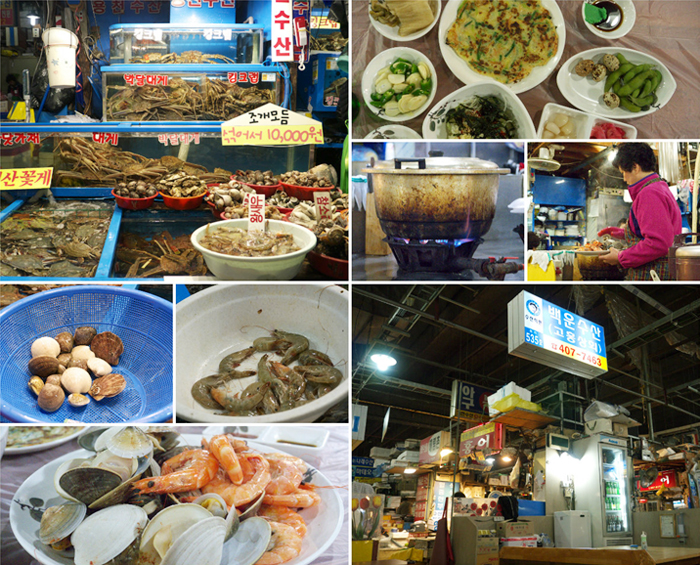
Garak Market
- Address: 600, Garak-dong, Songpa-gu, Seoul
- Getting there: Songpa Station (Seoul Subway Line 8), Exit 3. Take a right at the big intersection and go straight until you reach the market.
Or, Garak Market Station (Seoul Subway Line 3 & 8), Exit 1 or 8. The market will be on your left.
- Hours: 00:00-24:00 (open all year round)
- Tel: +82-2-3435-1000, 0610 (Korean only)
- Webpage: http://www.garak.co.kr/eng/jsp/eg/main.csp (Korean, English)
On-site restaurants
- Location: inside the Marine Products Market
- Seat fee: 3,500 won per person; cooking fee: 10,000 won (prices may vary by store)
- Menu: prawns (around 20,000 won for 1 kg), clams (around 10,000 won for 1kg), blue crabs, gizzard shads, flatfish, squids, etc. (subject to the change depending on market price)



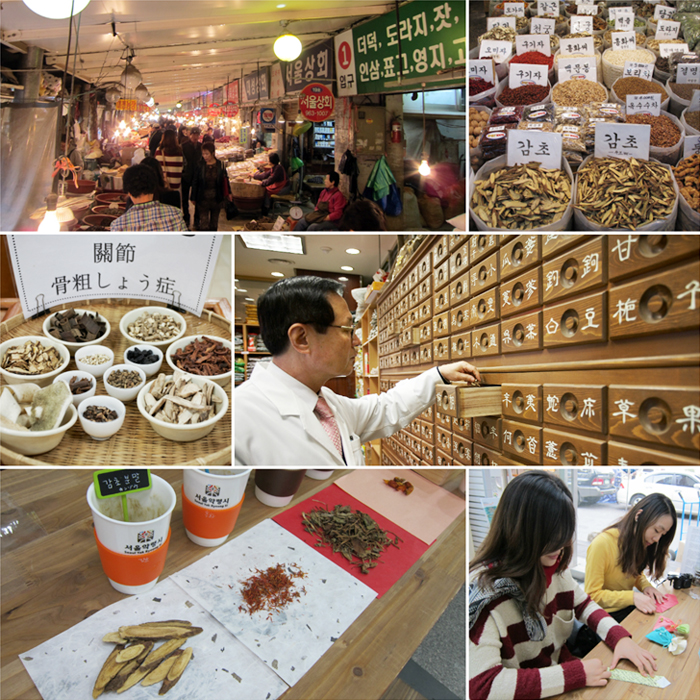



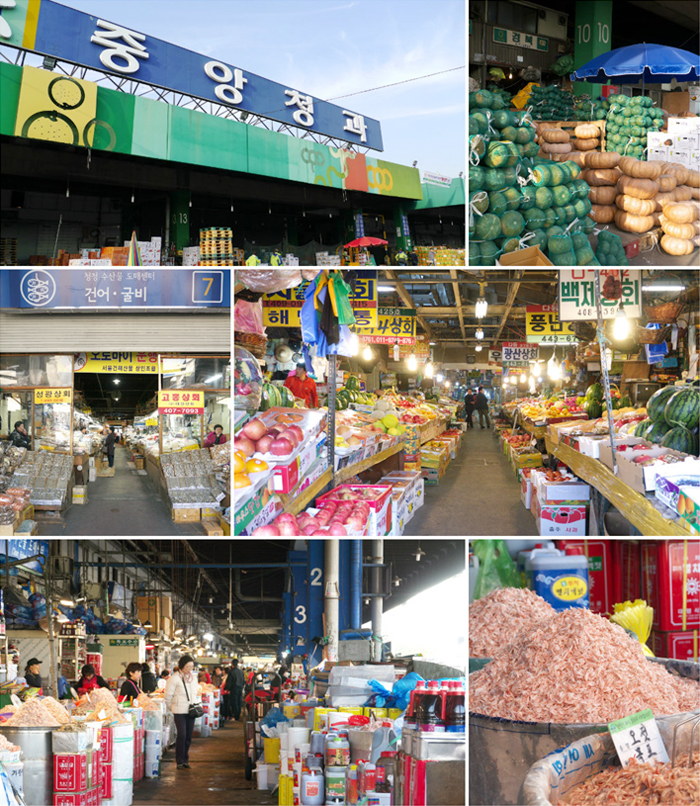

Comments
Post a Comment